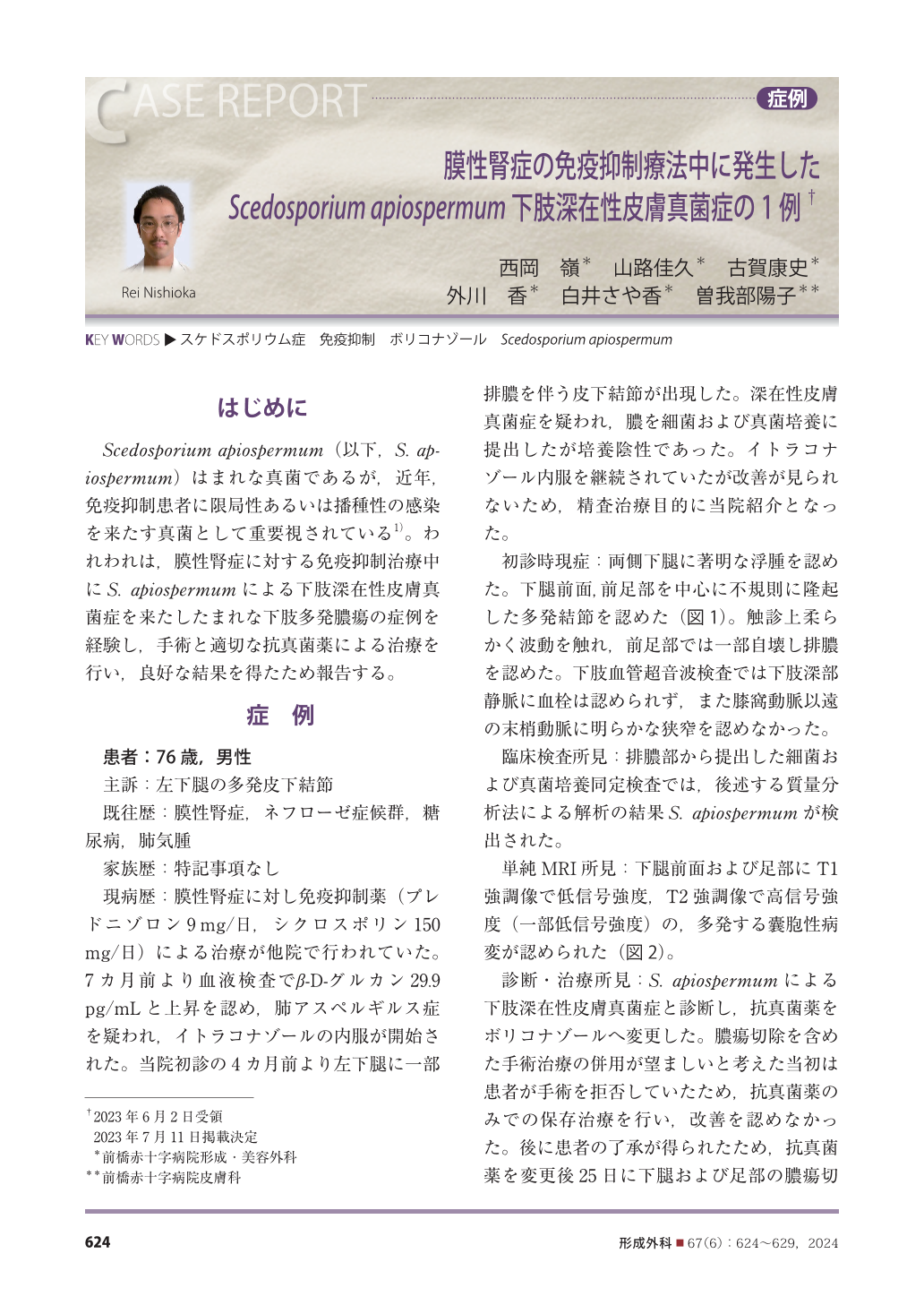Japanese
English
- 有料閲覧
- Abstract 文献概要
- 1ページ目 Look Inside
- 参考文献 Reference
はじめに
Scedosporium apiospermum(以下,S. apiospermum)はまれな真菌であるが,近年,免疫抑制患者に限局性あるいは播種性の感染を来たす真菌として重要視されている 1)。われわれは,膜性腎症に対する免疫抑制治療中にS. apiospermumによる下肢深在性皮膚真菌症を来たしたまれな下肢多発膿瘍の症例を経験し,手術と適切な抗真菌薬による治療を行い,良好な結果を得たため報告する。
We report a case of lower leg subcutaneous Scedosporium apiospermum infection in a 76-year-old man during immunosuppressive treatment for membranous nephropathy. It was noted that the patientʼs β-D glucan level was elevated to 29.9 pg/mL, and he was thus treated with itraconazole for suspected pulmonary aspergillosis.
Subsequently, multiple subcutaneous nodules appeared on the patientʼs left lower leg with partial drainage of pus, so he visited the initial hospital again and was referred to our hospital.
Pus culture revealed S. apiospermum, and the patient was diagnosed with deep cutaneous fungal infections of the lower leg caused by this fungus.
Voriconazole was administered, the abscesses were surgically excised, and the wound was healed by split-thickness skin grafting.
Voriconazole is effective in treating S. apiospermum, while amphotericin B and itraconazole are less effective. Antifungal agents are also considered less effective for abscesses, but surgical excision is effective when abscesses form.

Copyright© 2024 KOKUSEIDO CO., LTD. All Rights Reserved.


